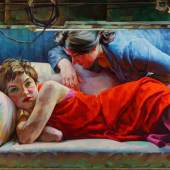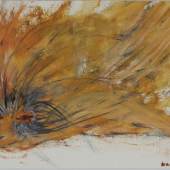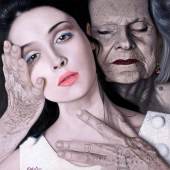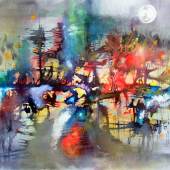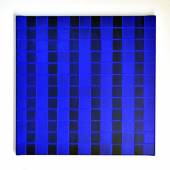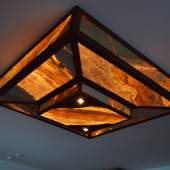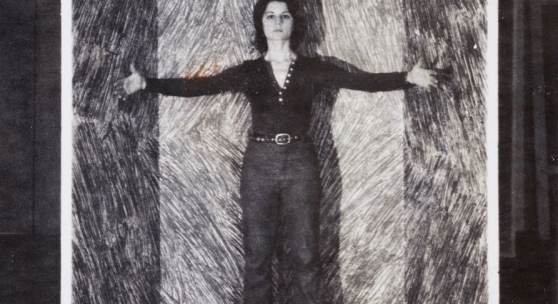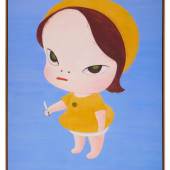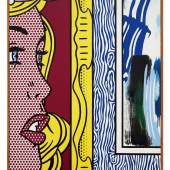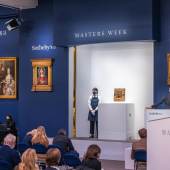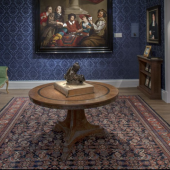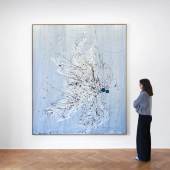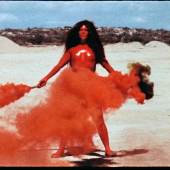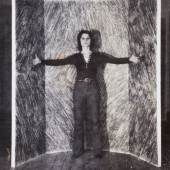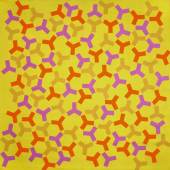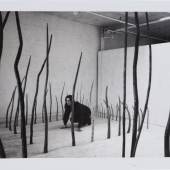Galerie Thaddaeus Ropac Announces Global Representation of the Estate of Rosemarie Castoro
-
Ausstellung21.02.2019 - 01.10.2019
Coinciding with the 80th anniversary of the birth of pioneering artist Rosemarie Castoro (1939-2015), Galerie Thaddaeus Ropac is delighted to announce that it will represent the artist's estate globally.
"One of the few women associated with Minimalism and a central figure of the New York art scene in the 1960s, Rosemarie Castoro broke the artistic boundaries of the period through her visionary engagement with scale and experimental use of materials, subverting the mathematical rigour of Minimalism. It is an honour to work with the estate of Rosemarie Castoro, building the momentum of overdue appreciation for the contribution she made to developments in both Minimalism and post-Minimalism." Thaddaeus Ropac
Represented in the collection of The Museum of Modern Art, New York, Rosemarie Castoro was the subject of an acclaimed retrospective at the Museu d’Art Contemporani de Barcelona (MACBA) in 2017. Following a presentation of her work in Ropac's London exhibition Land of Lads, Land of Lashes in 2018, Galerie Thaddaeus Ropac will open a solo show spanning her multi-faceted and interrelated practice of painting, sculpture, drawing, language and performance in its Paris Marais gallery on 21st February 2019, titled Wherein Lies the Space. A survey exhibition at MAMCO, Geneva is scheduled for Autumn 2019.
The Estate of Rosemarie Castoro commented: "Rosemarie's defiant statement 'I'm not a Minimalist. I am a Maximust!' embodies her exceptional force as an artist, and Galerie Thaddaeus Ropac embraced her spirit from the moment we started to collaborate. We are thrilled to be cementing the relationship with the gallery that started with the distinctive presentation of her works in their 2018 London exhibition, and will develop with the more in-depth solo show in 2019. Already Galerie Thaddaeus Ropac has demonstrated how it nurtures an artist's legacy and has significantly developed Rosemarie's reputation internationally."
Castoro's work exhibits a performative understanding of space that reflects her involvement in dance during her time at the Pratt Institute. She initially studied graphic arts but subsequently turned to painting and sculpture, which demonstrate their choreographic underpinnings. As Lucy Lippard states, ''All of Rosemarie Castoro’s art is about a fine bond between mind and body – gestural, but above all disciplined.'
Her early Minimal paintings of the mid-1960s explored sophisticated colour compositions and structural innovations that ranged from powerfully intersected primary tones to supremely subtle hues, which led Frank Stella to declare Castoro one of the most original colourists of their time. Her later paintings can be characterised as a challenge to Minimal art, from which she developed her practice into freestanding, multi-panel monochromatic works that occupy the space between painting and sculpture. Castoro pronounced, “I am a paintersculptor”.
From the 1970s until the last years of her life, Castoro focused on sculptural experimentation. She introduced surreal and sexual allusions into the rational and mathematical frame of Minimalism, her work's organic shapes presenting a parallel to the experimentation of Eva Hesse and Louise Bourgeois. Neither wholly Minimalist nor feminist, her work transgressed and metamorphosed into an erotically charged language.
Castoro's Soho studio, which she shared with her then-husband Carl Andre, was a hub for fellow artists including Sol LeWitt, Yvonne Rainer, Richard Long, Lawrence Weiner, Lee Lozano, Robert Smithson, Agnes Martin, and other protagonists in the tightly knit scene of the time - many of whom united at her studio to form the Art Worker's Coalition in protest against discrimination within the art world and its institutions.
The work of Rosemarie Castoro is included in the permanent collections of major institutions, including The Museum of Modern Art, New York; University Art Museum, Berkeley, CA; Newark Museum, Newark, NJ; MACBA, Barcelona and Centre national des arts plastiques, Paris, as well as the collections of the U.S. Embassy, Goldman Sachs, Bank of America and J.P. Morgan.
ABOUT THE ARTIST
Born in Brooklyn, Rosemarie Castoro lived and worked in New York her entire life, becoming a central figure in the city's Minimalist and conceptual art scene.
Finding early inspiration in experimental dance and choreography while a student at the Pratt Institute, Brooklyn, and in subsequent collaborations with Minimal dancer Yvonne Rainer in the 1960s, Castoro’s work throughout her life exhibited a distinctly performative character and understanding of space and movement. In 1966, she performed in Rainer’s Carriage Discreteness at the famous 9 Evenings festival. From 1964 onwards, Castoro created systematic works exploring colour and structural compositions in highly innovative experimentations, like her Y-Unit, Interference and Inventory paintings and drawings.
-
18.11.2021Sotheby’s To Announce Live Bidding Increments in Ether (ETH) Cryptocurrency For Banksy...
-
15.11.2021 - 19.11.2021Sotheby’s Lifts the Curtain onOne of the Most Important Sales Series Ever Staged $1 BILLION...
-
28.01.2022Sotheby’s New York Master Paintings and Sculpture Part ITotals $91 MillionSecond Highest...
-
1523 wurde Andrea Gritti Doge von Venedig. Er war ehrgeizig und sein Ziel war es, Venedig zur...
-
18.05.2024 - 20.07.2025Created in the artist’s studio north of Salzburg, this new series of paintings and ink...
-
21.09.2024 - 25.01.2025Group exhibition Carl Andre Joan Brown Rosemarie Castoro John Chamberlain Judy Chicago Dan Flavin...
-
21.09.2024 - 25.01.2025Carl Andre Mary Lovelace O’Neal Joan Brown Robert Morris Rosemarie Castoro Senga Nengudi...
-
28.11.2024 - 05.02.2025Marking Joan Snyder’s first solo exhibition with the gallery, Body & Soul is...
-
21.02.2019 - 01.10.2019
GALERIE THADDAEUS ROPAC - MARAIS
7 RUE DEBELLEYME, FR-75003 PARISÖFFNUNGSZEITEN
DIENSTAG - SAMSTAG 10 - 19 UHR
TEL +33 (0)1 4272 9900
FAX +33 (0)1 4272 6166
